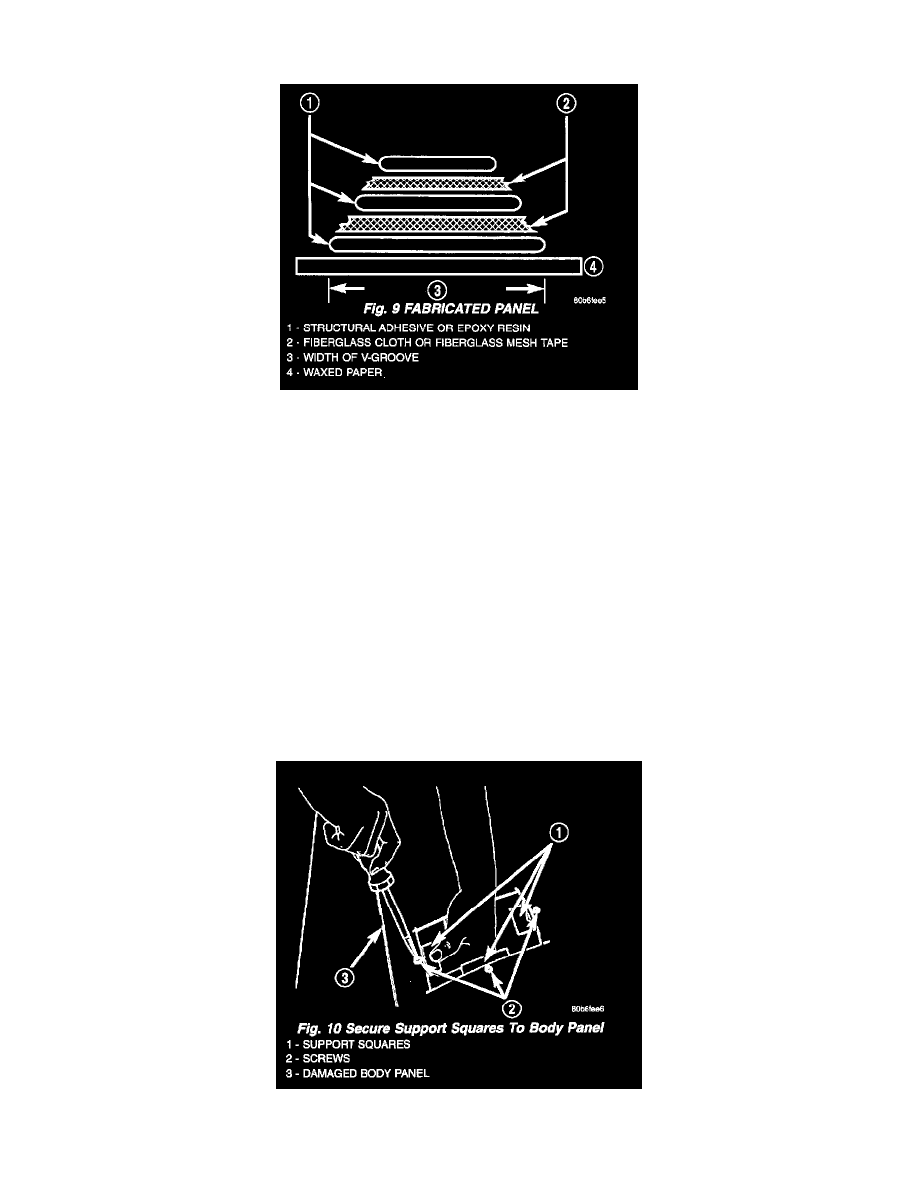Town & Country SWB FWD V6-3.3L VIN G Flex Fuel (2000)

fenders can be used to supply patch material. If existing material is not available or compatible, a patch can be constructed with epoxy and reinforcement
mesh (dry wall tape). Perform the following operation if required:
Fig. 9
1. Cover waxed paper or plastic with adhesive backed nylon mesh (dry wall tape) larger than the patch required (Fig. 9).
2. Tape waxed paper or plastic sheet with mesh to a surface that has a compatible contour to the repair area.
3. Apply a liberal coat of epoxy adhesive over the reinforcement mesh (Fig. 9). If necessary apply a second or third coat of epoxy and mesh after firs
coat has cured. The thickness of the patch should be the same as the repair area.
4. After patch has cured, peel waxed paper or plastic from the back of the patch.
5. If desired, a thin film coat of poesy can be applied to the back of the patch to cover mesh for added strength.
PANEL PATCH INSTALLATION
1. Make a paper or cardboard pattern the size and shape of the cutout hole in the panel.
2. Trim 3 mm (0.125 in.) from edges of pattern so patch will have a gap between connecting surfaces.
3. Using the pattern as a guide, cut the patch to size.
4. Cut scrap pieces of patch material into 50 mm (2 in.) squares to use as patch supports to sustain the patch in the cutout.
5. Drill 4 mm (0.160 in.) holes 13 mm (0.5 in.) in from edge of cutout hole (Fig. 8).
6. Drill 3 mm (0.125 in.) holes in the support squares 13 mm (0.5 in.) from the edge in the center of one side.
7. Scuff the backside of the body panel around the cutout hole with a scuff pad or sandpaper.
8. Mix enough epoxy to cover one side of all support squares.
9. Apply epoxy to the support squares on the half with the hole pre-drilled in it.
Fig. 10
